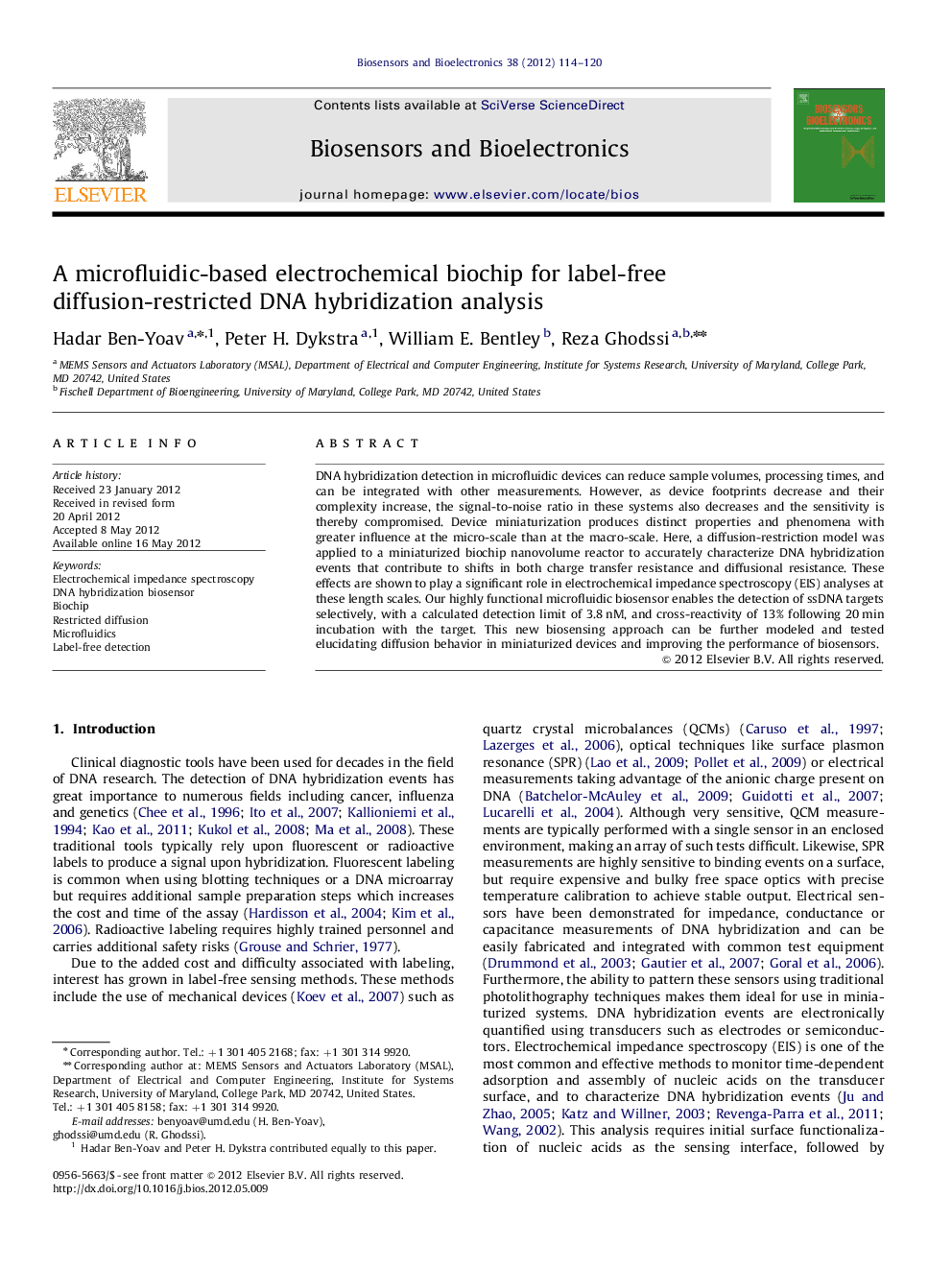| Article ID | Journal | Published Year | Pages | File Type |
|---|---|---|---|---|
| 867277 | Biosensors and Bioelectronics | 2012 | 7 Pages |
DNA hybridization detection in microfluidic devices can reduce sample volumes, processing times, and can be integrated with other measurements. However, as device footprints decrease and their complexity increase, the signal-to-noise ratio in these systems also decreases and the sensitivity is thereby compromised. Device miniaturization produces distinct properties and phenomena with greater influence at the micro-scale than at the macro-scale. Here, a diffusion-restriction model was applied to a miniaturized biochip nanovolume reactor to accurately characterize DNA hybridization events that contribute to shifts in both charge transfer resistance and diffusional resistance. These effects are shown to play a significant role in electrochemical impedance spectroscopy (EIS) analyses at these length scales. Our highly functional microfluidic biosensor enables the detection of ssDNA targets selectively, with a calculated detection limit of 3.8 nM, and cross-reactivity of 13% following 20 min incubation with the target. This new biosensing approach can be further modeled and tested elucidating diffusion behavior in miniaturized devices and improving the performance of biosensors.
► We fabricate a microfluidic lab-on-a-chip device. ► The device contains an array of individually addressable 25 nL reaction chambers. ► We detect DNA hybridization with electrochemical impedance spectroscopy analysis. ► Restricted diffusion model is used for the first time to analyze DNA hybridization. ► We detect ssDNA targets selectively and with a calculated detection limit of 3.8 nM.
